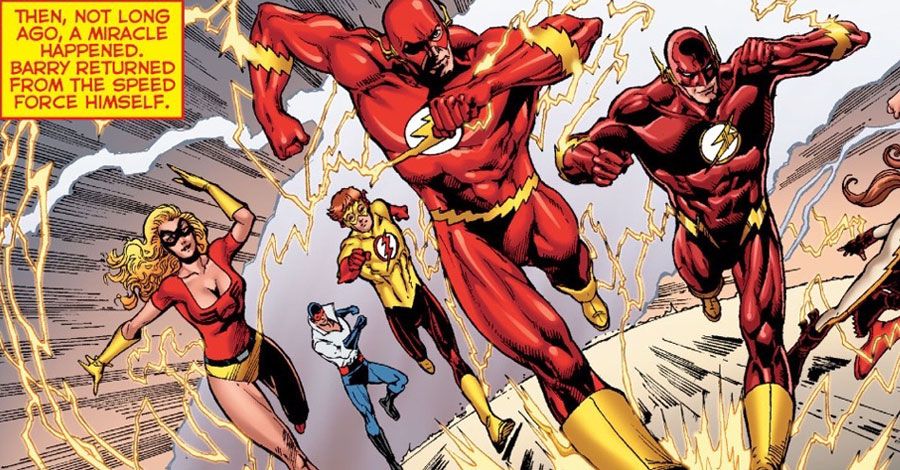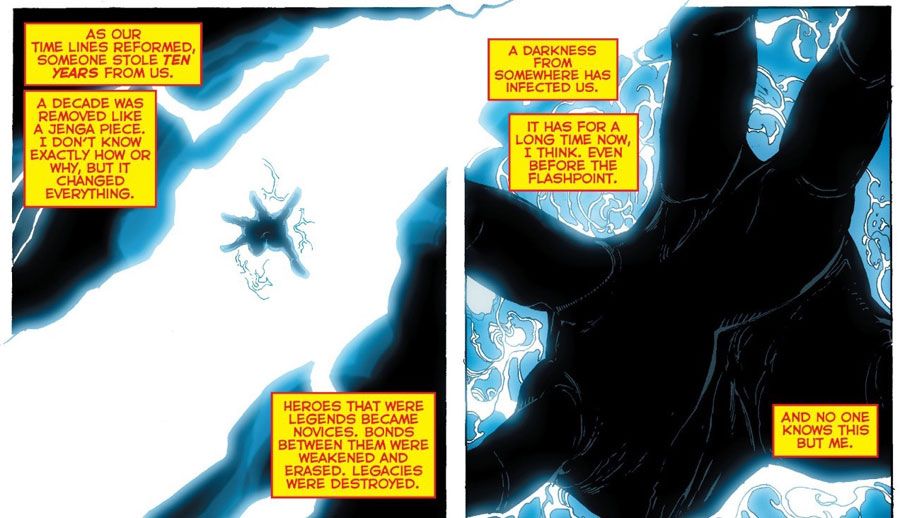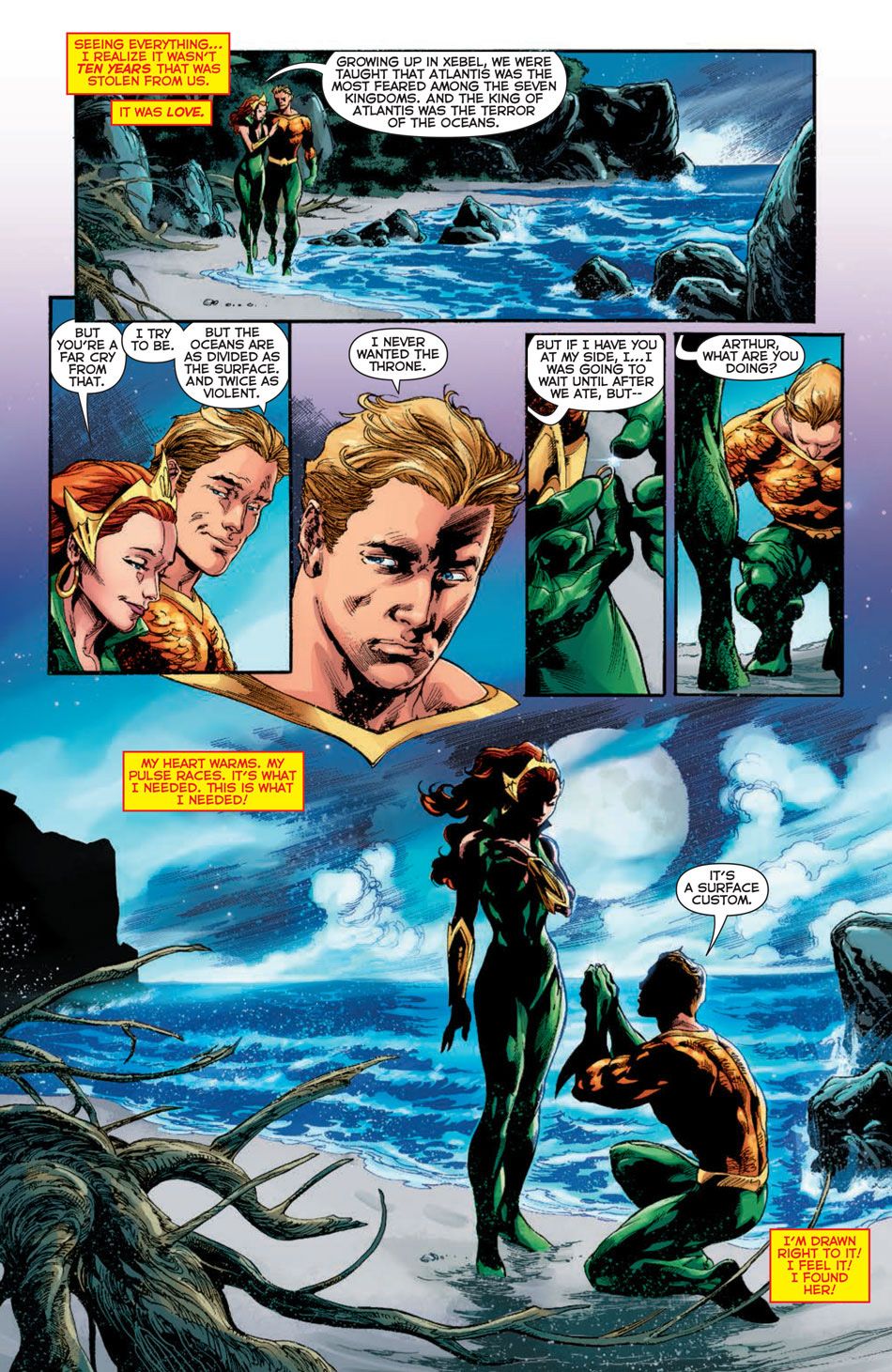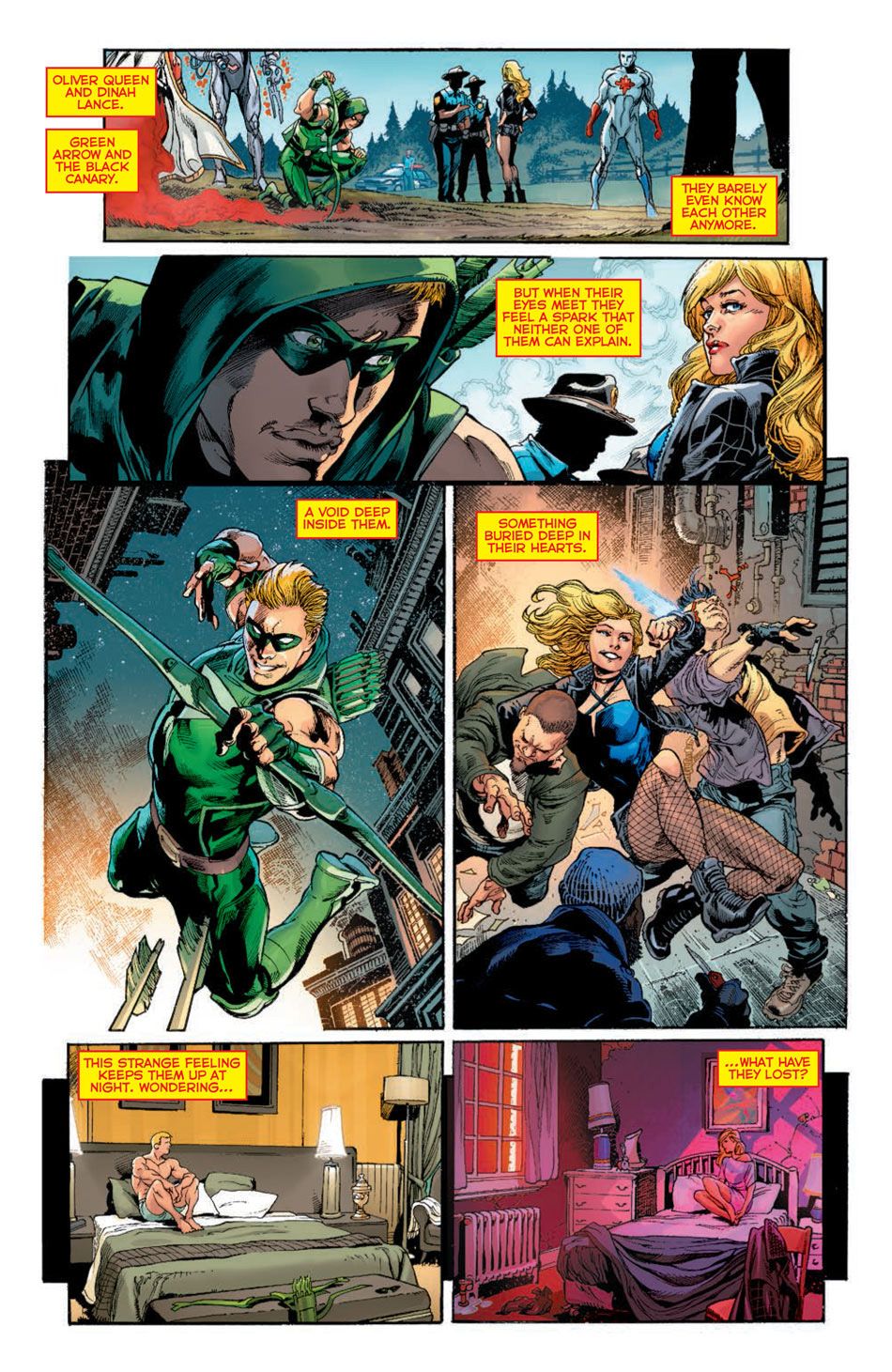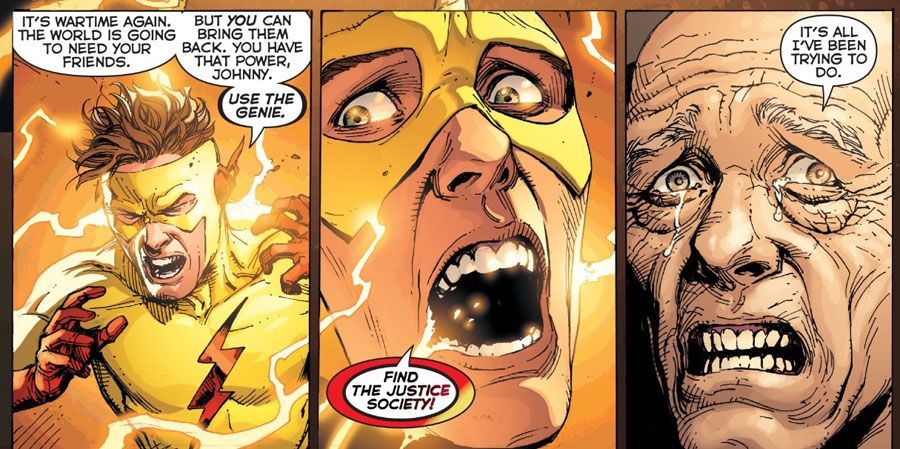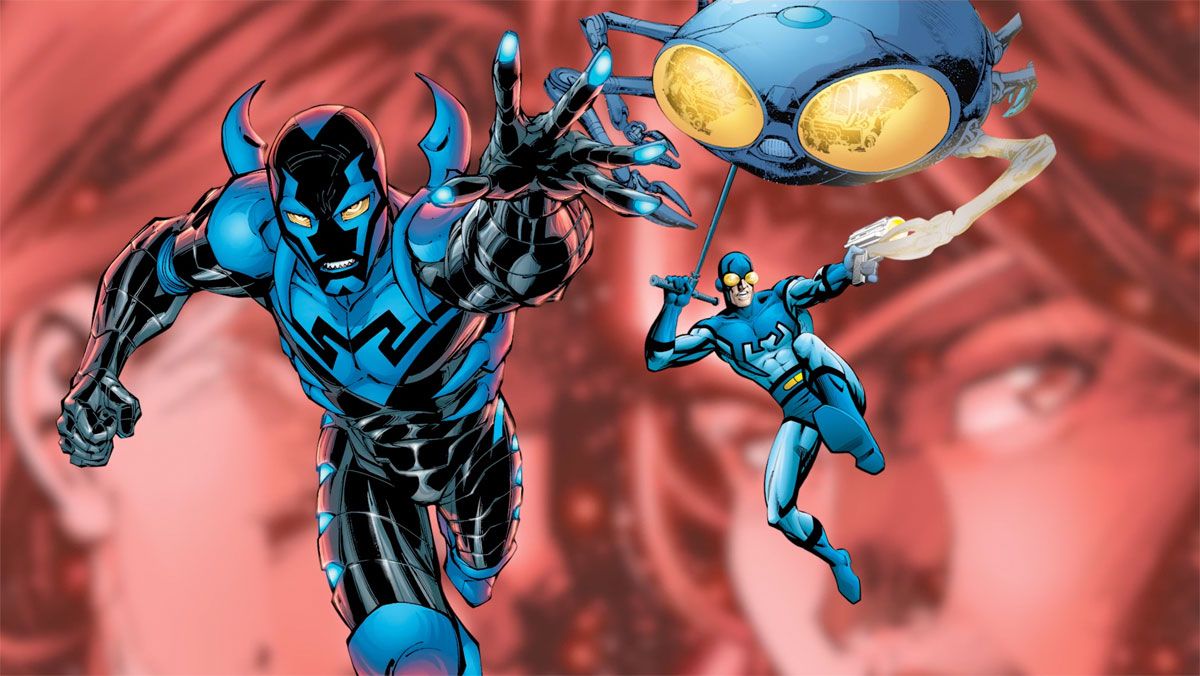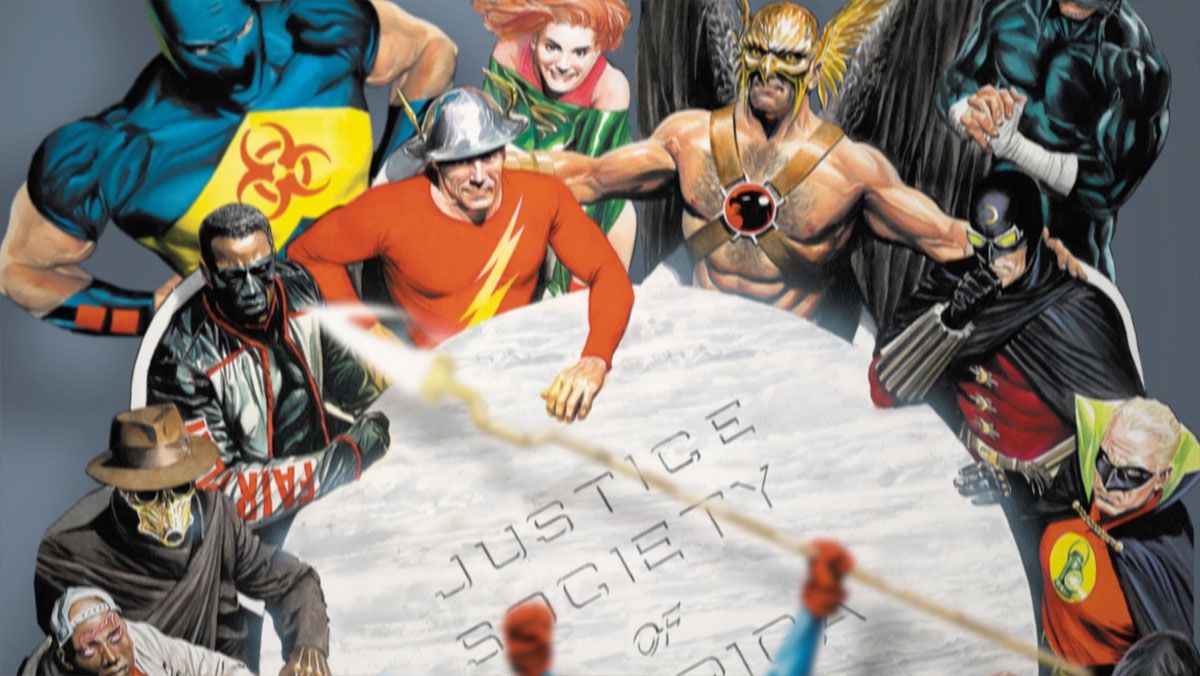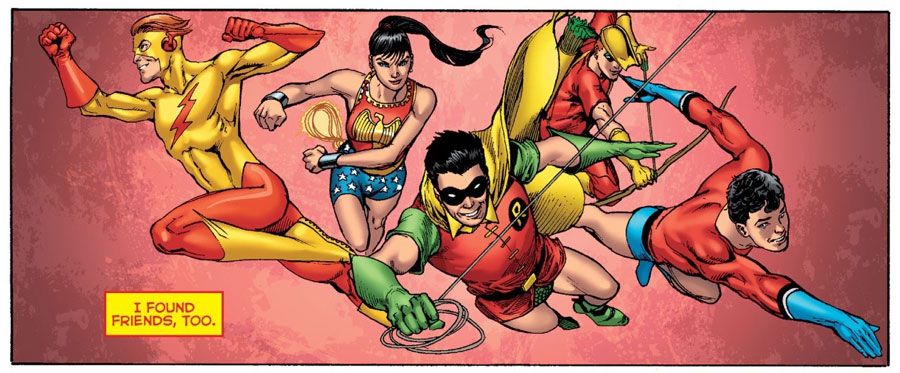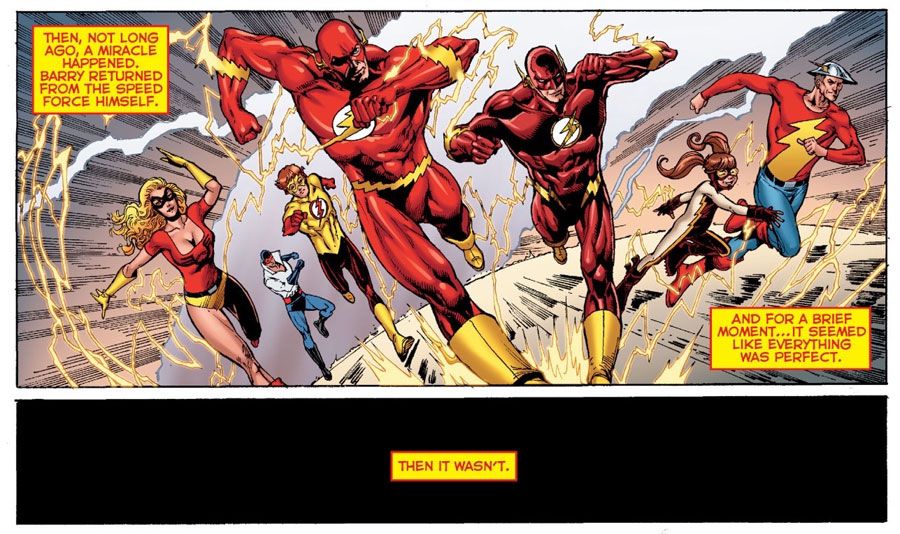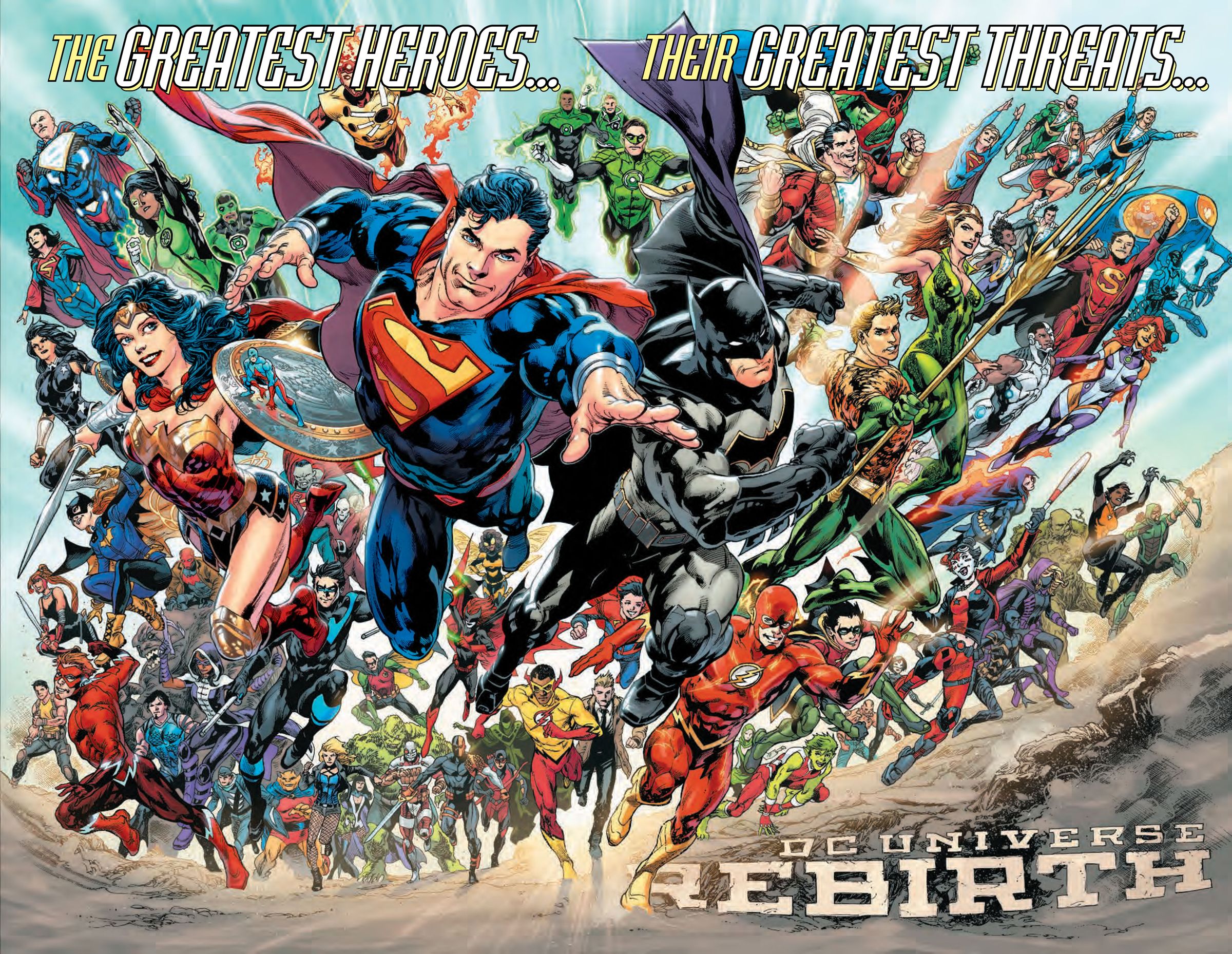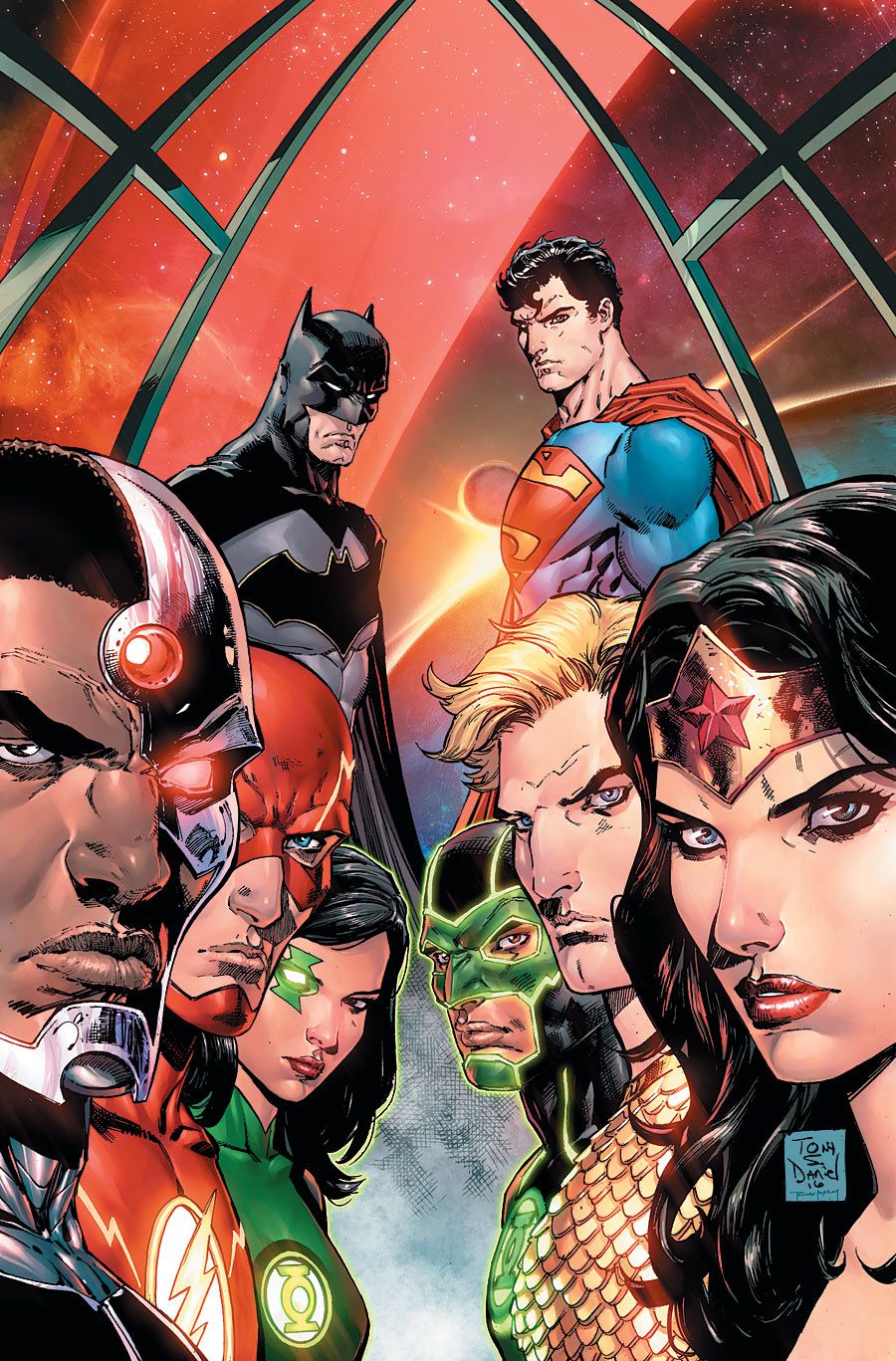The "DC Universe: Rebirth" special, written by Geoff Johns and drawn by a host of artists and colorists, restores to DC's superhero universe a number of plot, character and storytelling elements which the New 52 sought to eliminate, or at least downplay. For example, the New 52 implemented a truncated timeline with only five years' worth of backstory and virtually no generational or "legacy" elements.
Ten More "Rebirth" Returns DC Comics Needs To Make Happen
In that respect, Johns' use of the pre-"Flashpoint" Wally West is hardly subtle. Even more so than his best buddy Dick Grayson, Wally represented the successful graduation from teenage sidekick to adult standard bearer. Starting off as Kid Flash, Wally became the third Flash after the death of his uncle Barry Allen; and he vanished into the Speed Force during the lead-up to "Flashpoint" and the New 52 relaunch. In "Rebirth," however, he's back in his yellow sidekick duds (and a slightly younger body) while still retaining all of his adult memories. As Wally bounces around the current DC Universe, his musings offer readers insight into what came before, and what "Rebirth" seems to promise.
1. TEN MORE YEARS
When all is said and done, the post-"Rebirth" DCU will probably be a bit older than the New 52 version in a few different ways. One of those ways involves putting 10 years back on the clock. As mentioned above, the New 52's present day was originally some five years after the debuts of Superman, Batman, Wonder Woman and the rest of the Justice League. Adding those 10 years means that the League debuted some 15 years ago, which is about as old as the pre-"Flashpoint" DC Universe got prior to the New 52 relaunch.
(It may be just a coincidence, but in the real world it's been about 10 years since the end of "Infinite Crisis," by Johns, Jimenez, et al.; and the start of "52," co-written by Johns.)
What could have happened in those ten years? Plenty -- with most of it likely tapping into DC's voluminous library of superhero lore. There's enough room for a good chunk of the post-"Crisis On Infinite Earths," pre-"Flashpoint" stories of 1986-2011 to have occurred across those 15 years of comic-book time. While we shouldn't assume that the 1986-2011 comics are just being reloaded like some long-lost backup file onto DC's narrative hard drive, expanding the timeline should allow for more character development.
2. COMMITTING TO COMMITMENTS
Specifically, more than a few love connections were made in those 10 missing years. While the pre-"Flashpoint" DC Universe -- which I like to call Earth-August for short -- didn't have a monopoly on married superheroes, the New 52 made a point of dissolving (or otherwise discouraging) some prominent marriages. In the New 52 timeline, Barry Allen and Iris West, Aquaman and Mera, Hawkman and Hawkwoman, and Clark Kent and Lois Lane were never married; and the nixing of Kate Kane and Maggie Sawyer's nuptials led to J.H. Williams III and W. Haden Blackman leaving "Batwoman."
Now, however, Earth-August's married Lois and Clark (with a school-age son, Jonathan) will be the post-"Rebirth" headliners in the Superman books, and Aquaman just proposed to Mera in the pages of the "Rebirth" special. Again, Wally's involvement is telling, because he (married to reporter Linda Park) was one of those Earth-August couples affected directly by the New 52 relaunch. We'll have to see whether their children (one of whom became Impulse II) are coming back as well.
3. LOVE WILL KEEP US TOGETHER
It's not just marriages making a comeback. The "Rebirth" special also emphasizes old relationships and traditional pairings cast aside by the New 52. In particular, the "Rebirth" special hints at reuniting Green Arrow and Black Canary, who became involved romantically in the early 1970s and finally got married in 2007. In the New 52, neither had much room for the other, what with Green Arrow's globetrotting and Black Canary's Birds of Prey adventures. Rekindling their mutual attraction may look different than it used to, because the current versions of these characters are significantly different from their predecessors. (Personally, as much as I liked Ol' Lefty Ollie, I always had the feeling that Dinah was way too good for him; so this particular pairing may need to be justified by more than nostalgia.) Still, it's yet another indication that the post-"Rebirth" DC lineup will be a closer community than the New 52 was.
Adding back those ten years should also help make these relationships more believable. After all, the New 52's most prominent new relationship was Superman and Wonder Woman's budding romance; and it seemed to come out of nowhere. By contrast, John Byrne, George Perez and company teased a Superman/Wonder Woman fling over a few months in 1987 and '88. It culminated in an awkward kiss at the start of "Action Comics" #600, whereupon both the Man of Steel and Amazon Princess realized they were better off as colleagues and friends -- and over the next 20-plus years, they became the best of platonic buddies.
4. THE LEGACY STRUCTURE
Unlike the New 52's "power couple," the legacy structure which came to define Earth-August took a while to develop. Before "Crisis On Infinite Earths" created a single DC-Earth with a single timeline, DC didn't really have much in terms of legacy heroes. While there were sidekicks on Earth-1 and Earth-2 (and a whole generation of heroes who were the children of Earth-2's Golden Agers), only after "Crisis" did the younger folks start taking over directly for their mentors. In the wake of "Crisis" this meant three generations of super-folk, typified by the Justice Society, Justice League, and Teen Titans (soon to be just "the Titans"). A fourth generation began appearing in the late '80s and early-to-mid-'90s, and included Tim "Robin" Drake, Conner "Superboy" Kent, and Cassie "Wonder Girl" Sandsmark. From there came all manner of Starmen, Hourmen, Doctors Fate and Mid-Nite, etc. 1998's "DC One Million" miniseries postulated that the legacies would continue into the far future, creating whole dynasties of Supermen and Wonder Woman to fight crime across the eons.
The New 52 got rid of the Golden Agers (rebooting many of them in the present day on the new Earth-2) and decreed that the only Teen Titans who had ever existed were in the current group. It kept a lot of the former fourth-generation heroes like Tim and Conner, but (except for the Robins) tended to downplay their connections to older characters. This left the Titans and other younger characters fairly isolated from their older colleagues, and contributed to an overall fracturing of what had been a fairly chummy superhero population.
Not only is "Rebirth" bringing the legacies back, it's demonstrating how active they will be. Wally and Barry embrace warmly (and Wally has a nice moment with his own younger counterpart), Atom-in-waiting Ryan Choi is called to the aid of Ray Palmer, and Ted Kord aims to train Blue Beetle Jaime Reyes.
5. THE GENERATIONAL FACTOR
Again, DC's superhero line had legacies in the pre-"Crisis" days. Barry Allen was inspired by the comic-book adventures of the Golden Age Flash. John Stewart took over Sector 2814 when Hal Jordan quit the Green Lantern Corps. Dick Grayson knew the name "Nightwing" from a crimefighting friend of Superman's. However, once "Crisis" established a singular timeline, the idea that these legacies were generational -- that they were passed down, like family heirlooms -- fueled their growth. (Ironically, the stories about Bruce Wayne's father having a "Bat-Man" costume, and young Bruce later wearing a prototypical Robin outfit, were taken out of Batman's post-"Crisis" backstory.)
The New 52's generations didn't have that same connective quality. The revised five-year timeline featured older heroes in the Justice League; a second tier of slightly younger heroes like Supergirl, Cyborg and Firestorm; and finally kids like Blue Beetle and the Teen Titans. It was an explosion of characters a mile wide and an inch deep. Even the Robins had barely enough time for individual Dynamic Duo careers (or "internships," as they were characterized) during those five years.
"Rebirth" restores this generational perspective, most obviously by recounting pre-"Flashpoint" Wally's superhero career, and then explaining how he relates (and probably will relate) to New 52 Wally. However, young Jonathan Ke-- er, White also personifies a new Superman generation, and he'll be teaming up with Damian Wayne in the generationally-inflected "Super-Sons" series. It's not like "Super-Sons" couldn't have worked in the New 52, but setting it in the context of an "older universe's" generational legacy structure could give it a grounding it might not have had.
6. THE GOLDEN AGE ANCHOR
"Rebirth's" reintroduction of the Justice Society of America recalls the group's Silver Age revival. Back then, DC's editors were counting on readers having forgotten about the Golden Age characters, even though only a few years had passed since their books had been cancelled. Here, the memory loss is an in-universe story element, and nobody on DC-Earth remembers a group of super-people who fought in World War II. By removing the JSA from history, the New 52 avoided having an "anchor" on its timeline which linked it perpetually to the 1940s. It also allowed Superman and company to be the first superheroes on DC-Earth, a position they had enjoyed on multiple Earths in the pre-"Crisis" days. (I should point out that DC tried to retire the JSA twice before, in 1986 and 1994, only for the group to return briefly in 1992 and then for good in 1998.)
Although bringing back the JSA likely includes both of those elements, it also honors the Golden Age's place in DC's publishing history. These characters helped inspire everyone who came after them, whether in the real world or on DC-Earth. As the Silver Age showed, not even wholesale reinvention could make fans forget about the original Flash, Green Lantern, Atom et al. In that respect, it wouldn't be a "Rebirth" without them.
7. TOGETHER FOREVER
Like the Justice Society, the original Teen Titans were an emblematic generational team written out of the New 52. As with the JSA and JLA, the Titans initially were all pre-existing characters, banded together as much out of marketing as common interests; and each Titan brought a little bit of his or her home title to the book. By separating the current Teen Titans from their ostensible mentors, the New 52 might have made the book more accessible, but it lost that connection to the larger DC Universe that the original group had.
The classic Titans struggled frequently against being labeled a "junior Justice League," and the New Teen Titans formed in direct reaction to a League decision. Those tensions played out throughout the '70s and '80s, as the Titans grew up, graduating first from high school and then from their sidekick personae. This made them somewhat redundant -- when you've got a Wonder Woman and a (new-ish) Wonder Girl, who needs a Troia? -- and, as a result, easier to erase from a more streamlined history. Again, like the Justice Society, the third-generation Titans remind readers that these characters are still aging; but unlike their older colleagues, the Titans can be active alongside both the younger folks and the Justice Leaguers. Collectively they're a nice middle ground between the inexperience of youth and the familiarity of adulthood.
8. ALL-INCLUSIVE
Eliminating the first generation and much of the third meant that there hadn't been more than one Batgirl, Flash, Black Canary, Hawkman or Wonder Girl running around the DC Universe. (There were still plenty of Green Lanterns and ex-Robins, but that's a whole other can of worms.) One of the issues Earth-August faced was being practically overstuffed with characters -- so if a bunch of them are coming back, where will they all go?
Honestly, that concern seems to be outweighed by the simple fact that if they existed, they deserve a chance to shine. When Wally reminisces about Barry's return in "Rebirth," he recalls a super-family portrait with Flashes I-III, Kid Flash II, Impulse II, and the singular Jesse Quick and Max Mercury. In the old days, if you were a successor it probably meant the person before you was definitely out of the picture; because otherwise your job just got a lot less secure. One hopes that "Rebirth" will facilitate a new spirit of inclusiveness. "Green Lantern: Rebirth" brought back Hal without axing John, Guy or Kyle (although Kyle and Guy eventually got different-colored rings). Likewise, when "Flash: Rebirth" brought Barry back, Wally was still the Flash (although not for long, thanks to the New 52 relaunch). Here's hoping "Rebirth" doesn't slight the newcomers in favor of the old hands.
9. CLASSIC LOOKS
A quick look at Ivan Reis and Joe Prado's two-page "Rebirth" spread reveals a number of more traditional design elements returning to various characters' costumes. Superman's high collar and armored look is gone, Supergirl wears a more simple blue top and red skirt, and Nightwing's blue symbol and accents are back. Additionally, Green Arrow's grown his goatee again; Red Robin's glider-winged costume has been replaced by a red-and-green caped outfit in the classic "Robin" mold; and Donna Troy's new duds are a combination of the black Troia and star-spangled Wonder Girl looks. While not everyone is getting a retro makeover -- Green Lantern (Hal Jordan), the Flash and Shazam retain much of their New 52 styling -- these changes signify immediately that DC is trying to be "as good as you remember."
And finally...
10. THE BEST OF BOTH WORLDS
I mentioned earlier that we shouldn't just assume all the stories from the post-"Crisis," pre-"Flashpoint" period are being re-integrated into the timeline. Instead, it looks like the lost decade of comic-book time is meant to facilitate the same kinds of character developments which took place during those 25 years of real-world time. In "Rebirth," Barry remembers Kid Flash vanishing after an adventure with the original Teen Titans, and his memories dovetail with the events of the "Titans Hunt" miniseries. Moreover, in Barry's memory, Dick Grayson and Roy Harper wear their New 52 Robin and Speedy/Arsenal costumes, while Wally and Donna Troy are in their classic outfits.
This goes along with the wraparound cover of the "Rebirth" Previews magazine, which shows a classically-dressed Justice League that apparently includes New 52 member Cyborg. It all suggests a timeline still altered by "Flashpoint," but missing those critical 10 years. Accordingly, "Rebirth" is neither a total reboot nor a set of timeline tweaks, but an attempt to salvage what's been working and (one hopes) replace what hasn't been.
The pre-"Flashpoint" Wally West checks off many of the items on "Rebirth's" to-do list. He's a third-generation legacy character who's literally part of the "Flash family." He got married and became the father of yet another super-speedster; and until "Flash: Rebirth," the costumes he wore were basically variations of Silver Age duds. Not only did his Flash career span the quarter-century between "Crisis" and "Flashpoint," he was Kid Flash for some twenty years before that, when a lot of us olds were just discovering superhero comics. If Barry Allen was the avatar of the Silver Age, Wally West may fill much the same role for the children of the '70s, '80s, and '90s.
Naturally, DC can't assume (or, more to the point, can't appear to be assuming) that its future lies exclusively with those fans. As always, the "rebirthed" titles need to reach out to a wide range of potential readers. Wally and the other returning characters may attract attention, but these "Rebirth" rollbacks represent some significant structural changes. The shared universe they describe -- one rich in history and interconnectedness -- will be familiar to many, because over the years it created a loyal fanbase with a deep desire to see these characters treated well. "Rebirth's" real test isn't just whether those fans come back, but whether its changes can once again facilitate the kinds of comics that will broaden DC's readership.

